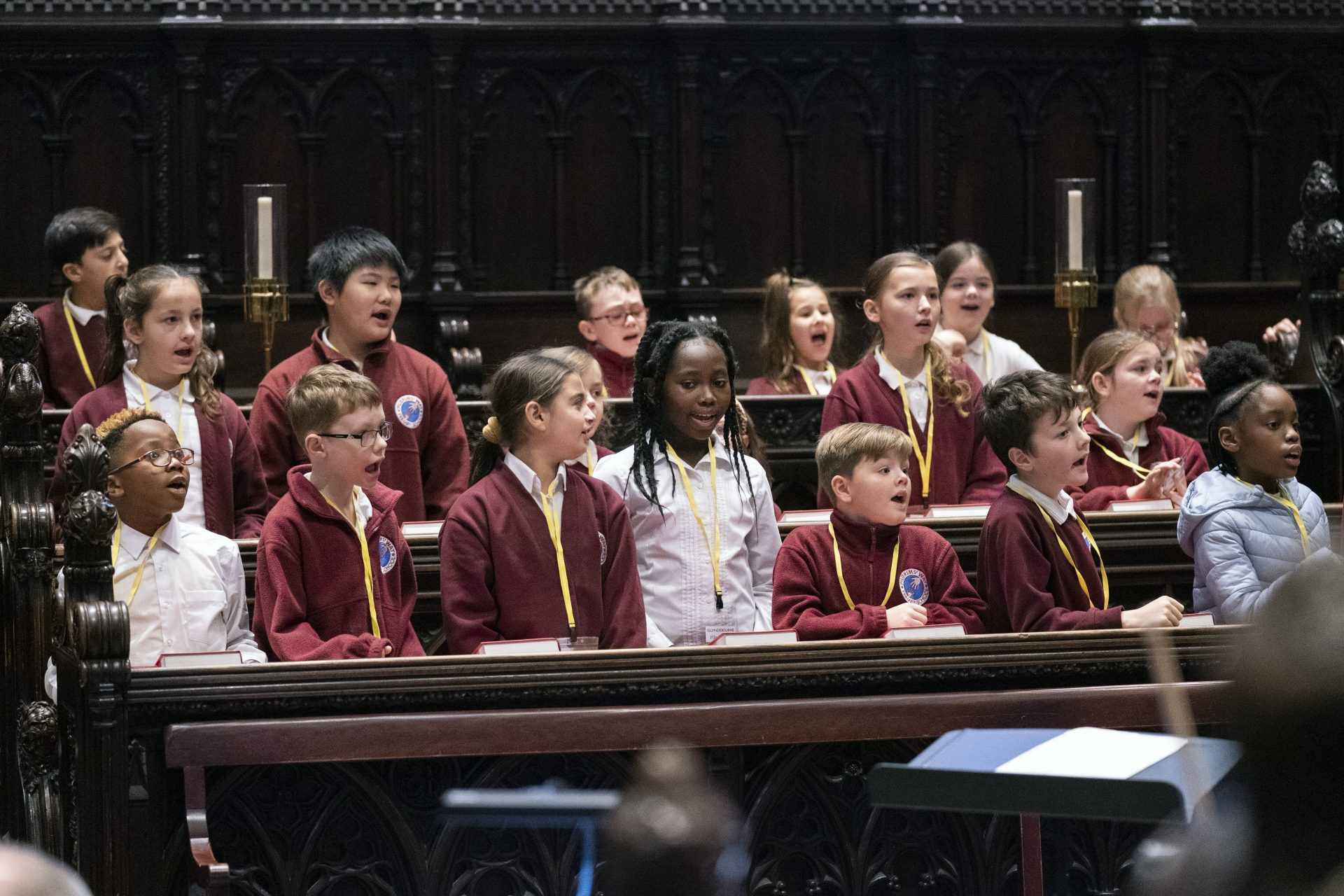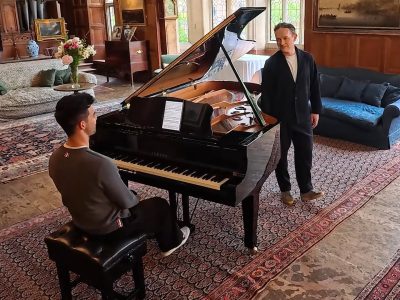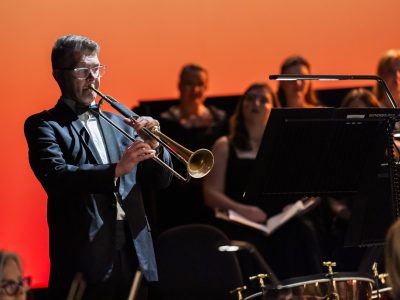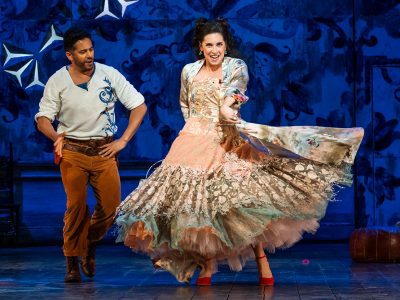
Working with schools in Canterbury
We take a look at the work Glyndebourne’s Learning & Engagement team have been doing with schools in Canterbury this autumn…
On 21 October visitors to Canterbury will be met by an unusual and moving sight. At midday a procession from the historic cathedral to the University of Kent will take place, with a huge 3.5 metre puppet of a young refugee at its centre. The puppet’s name is Little Amal, and this is part of The Walk – a travelling festival of art and hope in support of refugees, which has journeyed all the way from the Syrian/Turkish border, and will end in Manchester.

Amal outside Canterbury Cathedral. Photo © Andrew Hastings
Little Amal represents all displaced children, many separated from their families, embodying the urgent message ‘Don’t forget about us’. She was created by the acclaimed Handspring Puppet Company, the team behind Warhorse.
The Amal project has been the creative springboard for a host of activity from Glyndebourne’s Learning & Engagement team, which is taking place throughout autumn in Canterbury.
We’ve been working in partnership with the Marlowe Theatre to run a series of workshops with local schools. They explore themes of displacement by drawing parallels between the Little Amal project, and the themes in Handel’s Messiah (which will be performed as part of Glyndebourne Tour at the Marlowe Theatre). The students worked together with composer and conductor Howard Moody to devise their own song, where they imagine their feelings if they were in Amal’s position.
Composer and conductor Howard Moody said ‘Handel’s Messiah portrays a conflicted world in which people have “gone astray”, yet for those who have “walked in darkness” there is an opportunity to “see a great light”. This message of optimism in the context of reality is mirrored by The Walk project that passes Canterbury Cathedral a few days before the culmination of the Glyndebourne Messiah project.
‘It is touching that the groups involved have not only internalised Handel’s music but have also created a Song for Amal from their own musical imaginations. One of the song’s most powerful melodies emerged from a child who has recently made his own journey from Kabul. His Survival Song will be a potent reminder of the urgency to find a common ground through music and the arts.’

Amal outside Canterbury Royal Museum. Photo © Andrew Hastings
Some of the schools taking part have a strong connection to these themes, with pupils who are refugees themselves. The teachers involved in the project have seen some very profound and powerful moments during the workshops. At one workshop children, who have recently arrived in the UK and do not speak English yet, began singing along with the other children as part of the chorus. During another session a child with special educational needs, who had never spoken in class before, chose to perform a solo.
We were delighted to bring the students together in Canterbury Cathedral for a special informal performance of the song they devised and a few of the choruses from the Messiah, joined by our very own Chorus. Below you can see photos from the event, captured by Richard Hubert Smith:
Donate to the Tour






















